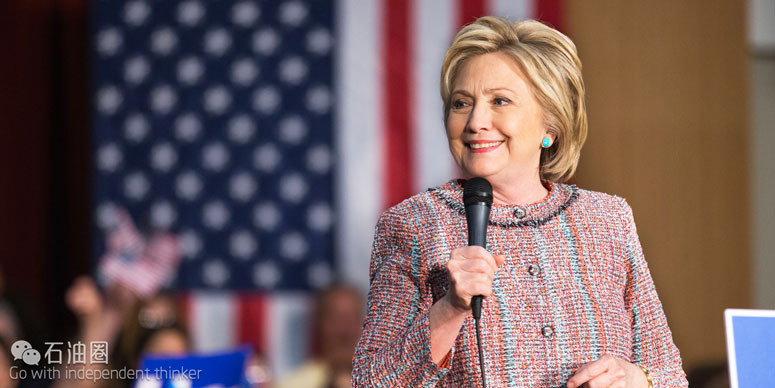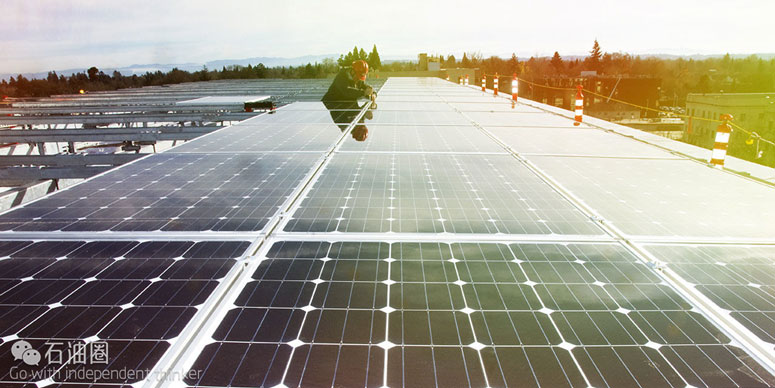Trump And Hillary On Energy: All Noise, No Substance
Precise Consultants Oct 10
If you were asked what Donald Trump thought of women, you could probably give a hundred different answers. The same may go if we asked you what Hilary Clinton thought of following the rules for emails and secrecy. But how many among us could give three straight answers on what the candidates for the office of American President had in mind for future energy policies?
It is perhaps not surprising given that this campaign has been judged as the one most distinguished by being full of noise but no substance. As usnews.com says, “There (has been) little discussion of the substantive issues on the minds of voters such as the deficit, taxation, the state of the economy and matters of war and peace.” It’s tough to talk fiscal matters when candidates are busy throwing dirt at each other.
However, let’s try our best to take a look at the policies of both candidates in regards to the energy industry. It may (or may not) make things clearer.
1. Oil
Trump’s plan to ‘Make America Great Again” regarding energy is wholly focused on American ‘energy independence’ at all costs. He’s fully supportive of deregulating fossil fuels. He believes ramping up production of these is a solid vehicle for growing jobs and wants to lift restrictions on oil and gas companies. During his first major speech on energy policy in May he said he would reduce the US’s dependence on foreign oil by enabling companies to drill in the Artic and the Gulf of Mexico. He supports the $8 billion Keystone XL oil pipeline, that would bring crude from Alberta in Canada (where most of the oil is owned by American companies) to refineries in Texas, and says this would create 42,000 jobs.
Clinton does not support the Keystone XL pipeline, saying it “distracts from U.S. efforts to combat climate change.” Rather unsurprisingly the State Department said it would create only 35 permanent positions, and 3,900 temporary jobs building the pipeline lasting a year. Though this sits at odds with the State Department approving the Alberta Clipper – a controversial pipeline carrying tar-sands bitumen from Alberta to Wisconsin.
She plans to cut by one-third U.S. oil consumption, opposes Artic drilling and isn’t far off being totally against far off the southeastern Atlantic coast. She has spoken about cutting tax subsidies for oil companies so the country can invest in cleaner forms of energy like natural gas. However, she has indicated that she remains open to leasing public lands to fossil fuel companies – seen by some as effectively a new subsidy. She confirmed she’d support reversing the 40-year-ban on crude oil exports if there were concessions from the oil and gas industry toward cleaner energy.
(Fun fact of the day – Clinton has taken more money than Trump from the oil and gas industry this campaign season.)
2. Fracking
Initially there was confusion about where Trump stood on fracking. You might remember he had previously been under the microscope for being seen to support local efforts to ban it. In an interview with 9News he said, “Fracking is something that is here whether we like it or not. But if a state wants to ban fracking, I can understand that” and that “voters should have a big say.” That statement put him at odds with what the industry wanted to hear and with what had happened in Colorado that May, when it ruled that state powers trump local measures in regulating the industry. This ended the five-year moratorium on fracking within Fort Collins’ city limits.
His most recent assessment puts him firmly on the side of the drillers. On a recent trip to K.P Kauffman in Denver, an oil and gas drilling operator, he said he believes regulations must be cut in order to support businesses and claimed that the “energy business is being decimated”. He told the 14 executives that gathered in the Colorado offices, “If Hillary gets in, it will double your regulations.” To hammer the point home, The Denver Post says he warned, “She will put you all out of business. I mean she has said she would put you out of business and certainly she’s going to put miners out of business.”
You’d think then that this is an easy case of he says yes, she says no, wouldn’t you? Well, back in April that seemed to be the case. The Clinton campaign aired a commercial that boasted of her work as secretary of state that made “China, India, some of the world’s worst polluters” to make “real change”. Domestically she vowed to “stand firm with New Yorkers opposing fracking, giving communities the right to say ‘No.’”
Unfortunately, people remembered that as Secretary of State she supported fracking. It’s true – though she now says, “by the time we get through all of my conditions, I do not think there will be many places in America where fracking will continue to take place.”
The Intercept – an online news site that reports on excerpts released by Wikileaks – ran a story on leaked emails, which revealed that State Department officials worked closely to ‘export’ fracking to countries all over the world. The site says they “reveal the Department’s role in bringing foreign dignities to a fracking site in Pennsylvania and its plans to make Poland a ‘laboratory’ for testing whether US success in developing shale gas can be repeated in a different country, particularly in Europe.” There was also the work done in Bulgaria following a government-imposed moratorium on the practice. Months of high-level diplomatic work and headlines like “Fracking will lead to fivefold drop in the price of gas” led to the easing of the ban.
It’s not quite all cloak and dagger – after all the Global Shale Gas Initiative was announced on April 7th 2010 by the State Department and in a widely covered event in Krakow Clinton announced Poland “would be part of the Global Shale Gas Initiative”.
The issue was brought up in a debate on April 15th 2016 in New York. When asked why she had apparently changed her mind Clinton replied, “I don’t think I’ve changed my view on what we need to do…It was America’s policy to try to help countries get out from under the constant use of coal…also if they were under the pressure from Russia…So we did say natural gas is a bridge. We want to cross that bridge as quickly as possible because in order to deal with climate change we have got to move on as rapidly as we can.”
Her campaign has since said they would focus on creating new regulations aimed at making the practice of fracking safer and less environmentally destructive.
Renewables
(Fun fact – when an analyst for the American Council on Renewable Energy ran a search on the candidates’ websites two months ago for the word ‘renewables’ it turned up 55 times on Clinton’s – and then92 when she produced more detailed plans – and once on Trump’s.)
At the first presidential debate Clinton said, “Donald thinks that climate change is a hoax perpetrated by the Chinese. I think it’s real.” He said that was a lie. He also said clean energy incentives were “a disaster”.
Related: Failing U.S. Energy Policy Needs Some Radical Changes
Unfortunately for Trump, there’s not much you can do to erase your tweets and, sure enough, back in Nov 6th 2012, he had tweeted, “The concept of global warming was created by and for the Chinese in order to make US manufacturing non-competitive.” So no surprises then when Trump declared in May that he would “cancel” the Paris climate deal. He argued that it is “bad for U.S. business” and allows “foreign bureaucrats control over how much energy we use.”
Clinton is big on renewables – she says it’s an “urgent threat and a defining challenge of our time”, and her website motto is “taking on the threat of climate change and making America the world’s clean energy superpower.” She would see a target of 25 percent of the total U.S. energy coming from this sector by 2025. She’d encourage this by cutting subsidies for oil and gas producers and apparently toughening fracking regulations. Clinton has also promised “more than half a billion solar panels installed across the country by the end of the first term”, prizes for communities that cut red tape to allow renewable projects, and pledges that by 2027, every U.S. home will be powered by clean energy.
It’s unlikely that November 8th 2016, voters will go to the polls and choose the next president based on the future of America’s energy. But what is certain is that there will be big changes ahead for our industry, whichever candidate takes the job.


 石油圈
石油圈


